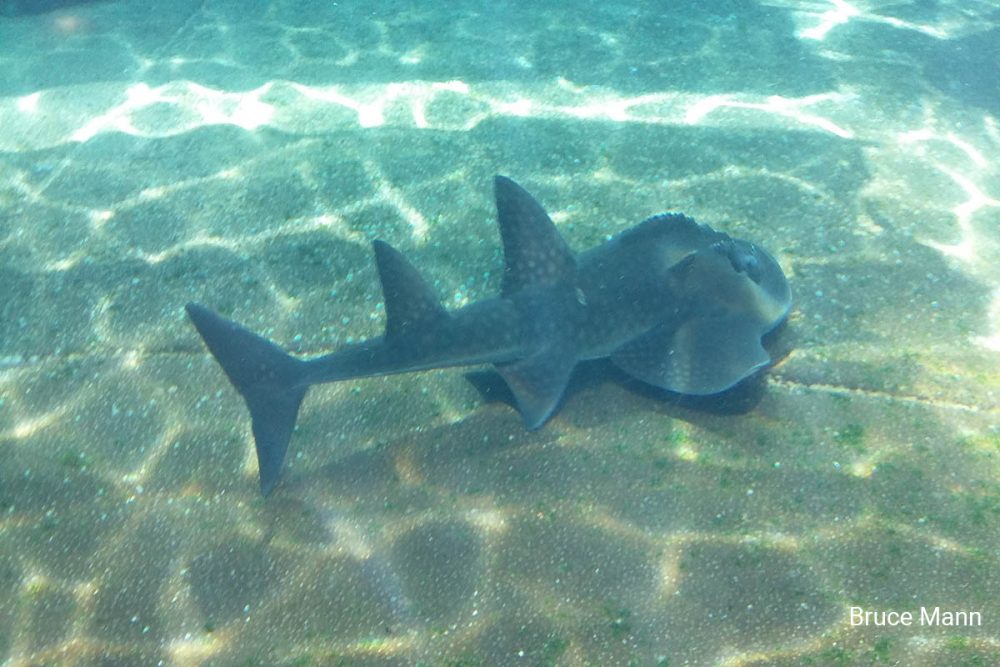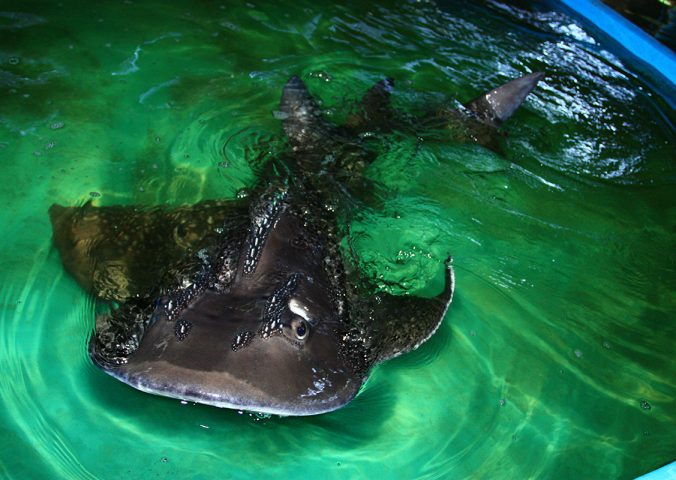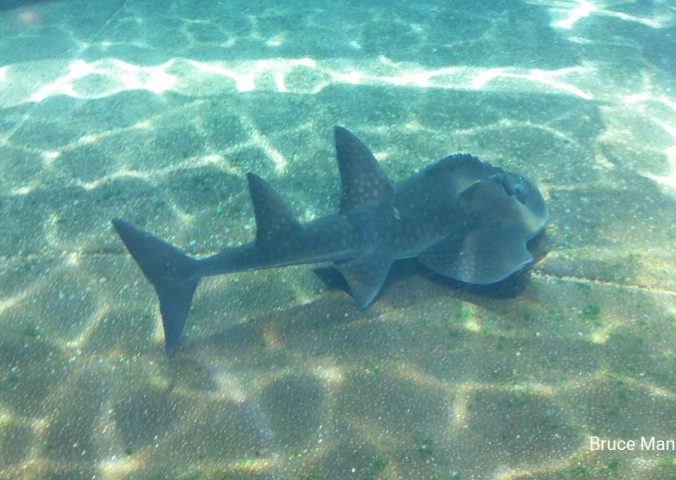About
The bowmouth guitarfish’s mouth undulates like a longbow. Although this is a species of ray, it is also known as the mud skate or shark ray across its range.
This species has characteristic spotted markings on the body, although they tend to fade in larger guitarfish. They also have spines in rows above the eyes and down the top of the back, which are used for butting other individuals in defence. They reproduce through aplacental viviparity, where embryos feed mainly on egg-yolk within the female and are born as live young. The average litter size is four and the young are typically 51cm at birth.
The biggest threat to this species is fisheries, as they are targeted for the fin market and caught as bycatch. Their meat is sold for consumption, with the fins entering the Asian shark fin market where they can reach high prices. Habitat destruction and pollution are also threatening this species. There is hope that Turtle Exclusion Devices (TEDs) placed within trawl nets will reduce the capture of this species within Australian waters, primarily on the Great Barrier Reef. Marine parks where trawling is banned may also protect this species, although their movements and habitat usage are not known and this could reduce the effectiveness of protected habitats.
- Order: Rajiformes
- Family: Rhinobatidae
- Population: Unknown
- Trend: decreasing
- Size: Up to 3m (?)
- Depth Range (m): Up to 90m
EDGE Score
Distribution
This species is rare but widely distributed throughout the Indo-West Pacific. It is found in isolated pockets of inshore waters across East Africa, Papua New Guinea, Japan, Northern and Western Australia and New Caledonia.
Habitat and Ecology
Bowmouth guitarfishes can be found in coastal regions, usually around coral reefs down to a depth of 90m. They remain close to the seabed and use their ridged teeth to crush crustaceans and molluscs.


